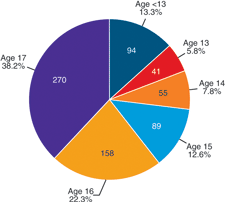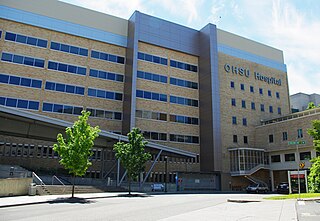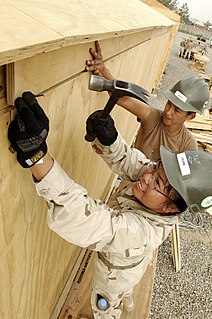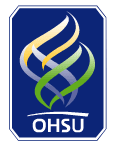Health, as defined by the World Health Organization (WHO), is "a state of complete physical, mental and social well-being and not merely the absence of disease or infirmity." This definition has been subject to controversy, as it may have limited value for implementation. Health may be defined as the ability to adapt and manage physical, mental and social challenges throughout life.
Workers' Memorial Day, International Workers' Memorial Day or International Commemoration Day (ICD) for Dead and Injured or Day of Mourning takes place annually around the world on April 28, an international day of remembrance and action for workers killed, disabled, injured or made unwell by their work.
A health professional may operate within all branches of health care, including medicine, surgery, dentistry, midwifery, pharmacy, psychology, nursing or allied health professions. A health professional may also be a public/community health expert working for the common good of the society.

An occupational hazard is a hazard experienced in the workplace. Occupational hazards can encompass many types of hazards, including chemical hazards, biological hazards (biohazards), psychosocial hazards, and physical hazards. In the United States, the National Institute for Occupational Safety and Health (NIOSH) conduct workplace investigations and research addressing workplace health and safety hazards resulting in guidelines. The Occupational Safety and Health Administration (OSHA) establishes enforceable standards to prevent workplace injuries and illnesses. In the EU a similar role is taken by EU-OSHA.

Around the world, nearly 250 million children, about one in every six children, ages 5 through 17, are involved in child labor. Children can be found in almost any economic sector. However, at a global level, most of them work in agriculture (70%). Approximately 2.4 million adolescents aged 16 to 17 years worked in the U.S. in 2006. Official employment statistics are not available for younger adolescents who are also known to work, especially in agricultural settings.
Workplace health surveillance or occupational health surveillance (U.S.) is the ongoing systematic collection, analysis, and dissemination of exposure and health data on groups of workers. The Joint ILO/WHO Committee on Occupational Health at its 12th Session in 1995 defined an occupational health surveillance system as “a system which includes a functional capacity for data collection, analysis and dissemination linked to occupational health programmes”.

Oregon Health & Science University Hospital is a 522 bed teaching hospital, biomedical research facility, and Level I trauma center located on the campus of Oregon Health & Science University (OHSU) in Portland in the U.S. state of Oregon. OHSU hospital has consistently been ranked by the U.S. News & World Report as the #1 hospital in the Portland metro regional area and is frequently ranked nationally in multiple medical specialties.
Prevention through design (PtD), also called safety by design usually in Europe, is the concept of applying methods to minimize occupational hazards early in the design process, with an emphasis on optimizing employee health and safety throughout the life cycle of materials and processes. It is a concept and movement that encourages construction or product designers to "design out" health and safety risks during design development. The concept supports the view that along with quality, programme and cost; safety is determined during the design stage. It increases the cost-effectiveness of enhancements to occupational safety and health.
An occupational fatality is a death that occurs while a person is at work or performing work related tasks. Occupational fatalities are also commonly called “occupational deaths” or “work-related deaths/fatalities” and can occur in any industry or occupation.

A physical hazard is an agent, factor or circumstance that can cause harm with or without contact. They can be classified as type of occupational hazard or environmental hazard. Physical hazards include ergonomic hazards, radiation, heat and cold stress, vibration hazards, and noise hazards. Engineering controls are often used to mitigate physical hazards.

Radiation dose reconstruction refers to the process of estimating radiation doses that were received by individuals or populations in the past as a result of particular exposure situations of concern. The basic principle of radiation dose reconstruction is to characterize the radiation environment to which individuals have been exposed using available information. In cases where radiation exposures can not be fully characterized based on available data, default values based on reasonable scientific assumptions can be used as substitutes. The extent to which the default values are used depends on the purpose of the reconstruction(s) being undertaken.
Charles A. Czeisler is an American physician and sleep researcher. He is a researcher and author in the fields of both circadian rhythms and sleep medicine.

The OHSUCenter for Women's Health is a center for clinical services and health education and information for women at Oregon Health and Science University (OHSU) in Portland, Oregon. It is a designated "National Center of Excellence" for Women's Health, a status granted by the U.S. Department of Health and Human Services. As part of an academic medical center, the Center for Women's Health aims to improve awareness of women's health in the education and research arms of OHSU, and incorporates that education and research into the clinical setting.

Workplace robotics safety is an aspect of occupational safety and health when robots are used in the workplace. This includes traditional industrial robots as well as emerging technologies such as drone aircraft and wearable robotic exoskeletons. Types of accidents include collisions, crushing, and injuries from mechanical parts. Hazard controls include physical barriers, good work practices, and proper maintenance.












